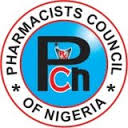Abstract: Health Insurance in Nigeria has had a tortuous historical development from the first attempt in 1962 to the enactment of the National Health Insurance Scheme (NHIS) act 35 of 1999 and the gradual increase in coverage from less than 150,000 lives in 2004 to about 5 million (3% of the population) in 2014. The NHIS which covers mainly federal public sector worker and their families is a social security arrangement with a comprehensive benefit package. Challenges to the scheme can be tackled by making the scheme mandatory, improving regulation and exploring alternative funding.
Introduction
Health Insurance in Nigeria can be said to have undergone a prolonged incubation over the past five decades and a steady development in the last few years. Social Health Insurance in Nigeria went through a very tortuous planning process from 1962 until the National Health Insurance Scheme (NHIS) was created by the NHIS act 35 of 1999.[1,2&3]
History
The first attempt at establishing a health insurance scheme in Nigeria was made in 1962 when the then federal minister of health, Dr. M. A. Majekodunmi presented a bill at parliament for its establishment in the Lagos area. Unfortunately, the idea met stiff resistance from the Nigerian Medical Association.[3] The plan was shelved during the civil war years and later revisited, more than twenty years later; when in 1984 the Minister of health, Admiral Patrick Koshoni commissioned a study led by Prof. Diejomaoh which found the scheme desirable and workable in Nigeria. Another Minister of Health, Prof. Olikoye Ransome -Kuti, in 1988, commissioned the Dr. Emma Umez-Eronini committee which recommended the template for the present day National health insurance scheme (NHIS). The law establishing the scheme was signed in May of 1999 but the proper takeoff did not happen until 2005, due to administrative foot-dragging. The period between signing into law and takeoff of the scheme gave opportunity to private sector to grow private health insurance. Pressure from the private sector coupled with the enthusiasm of another Minister of Health, Prof. Eyitayo Lambo led to the official flag off of the formal sector programme in June 2005 and commencement of services to enrollees in September 2005.
Shortly after the scheme was flagged off, it was given a presidential mandate to ensure universal coverage of Nigerians by 2015 through Social Health Insurance.[1&2] Though health insurance cover in Nigeria has been on the increase over the last decade; from less than 150,000 lives in 2004[3] to about 5 million in 2014,[2,4&5] this can at best, only be referred to as a modest achievement, considering the fact that only about 3% of the country’s population have access to health insurance despite the tall dream of achieving universal coverage by 2015.[5]
The National Health Insurance Scheme (NHIS)[6]
Nigeria’s NHIS became operational in June, 2005, but was established by law number 35 of 1999 to improve health care delivery by providing a sustainable alternative source of funding health care services. It is a social security arrangement that provides financial security to the citizens against unforeseen ill health. The Scheme comprises programmes that cover formal sector workers, informal sector workers and the vulnerable groups.
Programmes: In order to ensure that every Nigerian has access to good health care services, the National Health Insurance Scheme developed various programmes to cover different segments of the society and these are:
Formal Sector Social Health Insurance Programme (FSSHIP): Consist of Public Sector, Organized private Sector and Armed Forces, Police & other Uniformed Services.
Informal Sector Social Health Insurance Programme: Consist of Community Based Social Health Insurance Programme and Voluntary contributors Social Health Insurance Programme.
Vulnerable Group Social Health Insurance Programme: Vulnerable groups’ programmes are designed to provide health care services to persons who due to their physical status (including age) cannot engage in any meaningful economic activities e.g. physically challenged persons, children under five, orphans, pregnant women, prison inmates, refugees and internally displaced persons.
Most of all the current health insurance enrollees in Nigeria are on the FSSHIP and are employees of the Federal Government and their dependants.[2,5,6&7]
FSSHIP [6]
Financing: Contributions for NHIS are earnings-related. The employer pays 10% while the employee pays 5%, representing 15% of the employee’s basic salary. However, the employer may decide to pay the entire contribution.
Scope of Coverage: The contributions paid cover healthcare benefits for the employee, a spouse and four biological children below the age of 18 years. More dependants or a child above the age of 18 could be covered on the payment of additional contributions by the principal beneficiary.
(1).jpg) Benefit Package: The benefit package is comprehensively designed to cover most of the health care needs of Nigerians.[5&7] Health care providers under the Scheme are to provide the following to the contributors:
Benefit Package: The benefit package is comprehensively designed to cover most of the health care needs of Nigerians.[5&7] Health care providers under the Scheme are to provide the following to the contributors:
i) Out-patient care, including necessary consumables.
ii) Prescribed drugs, pharmaceutical care and diagnostic tests as contained in the National Essential Drugs List and Diagnostic Test Lists.
iii) Maternity care for up to four live births for every insured contributor/couple in the Formal Sector Programme.
iv) All new born eligible to cover will be covered during the postnatal period of twelve weeks from the date of delivery.
v) Preventive care, including immunization, as it applies in the National Programme on Immunization, health education and family planning education.
vi) Consultation with specialists, such as physicians, paediatricians, obstetricians, gynaecologists, general surgeons, orthopaedic surgeons, ENT surgeons, dental surgeons, radiologists, psychiatrists, ophthalmologists, physiotherapists, etc.
vii) Hospital care in a standard ward for a stay limited to cumulative 21 days per year.
viii) Eye examination and care, excluding spectacles and contact lenses.
ix) A range of prostheses (limited to artificial limbs produced in Nigeria).
x) Preventive dental care (including consultation, dental health education, amalgam filling, and simple extraction).
Exclusions: These conditions and procedures are excluded from the benefit package of NHIS.
Occupational/industrial injuries and Injuries resulting from natural disasters, social unrest and extreme sports
Transplant and cosmetic surgeries
Drug abuse/addiction
Epidemics
Family planning commodities
Domiciliary treatment
Advanced procedures e.g. for complex congenital abnormalities, artificial insemination and IVF.
Postmortem examination
How the NHIS works [5&6]
Administration and Provision of Services: An agency of government established by Act 35 of 1999, referred to as NHIS is charged with the responsibility of regulating the Scheme (Public and private sector). NHIS is responsible for registering Health Maintenance Organizations (HMOs) and Health Care Providers (HCPs), issuing appropriate guidelines for the scheme and determining, after negotiation, capitation and other payments due to HCPs, by the HMOs. The HMOs are limited liability companies (private or public owned) charged with the responsibility of collecting contributions, paying HCPs for services rendered and ensuring quality assurance.
Healthcare services are provided by registered private and public hospitals and clinics (HCPs). Beneficiaries (Enrollees) are to register through an HMO and choose a primary HCP which serves as their first contact (‘gate keeper’) to the scheme and coordinates their access to secondary and tertiary level care.
Provider reimbursement: Health care providers under the scheme are classified as primary (the gate keeper-private hospitals and clinics, primary health care centres and outpatient departments of general, teaching or specialist hospitals), secondary (general hospitals including other medical centres, Pharmacies, Laboratories, Dental clinics, Radiography centres, Physiotherapy clinics e.t.c.) and tertiary (specialist and teaching hospitals).
Health care providers under the scheme are paid either by capitation or fee-for service rendered. Capitation is the payment to a primary health care provider by the HMOs on behalf of a contributor; this is made monthly whether or not the services are used.[8] Fee-for service is made by HMOs to non-capitation receiving health care providers who rend services on referral from other health care providers. When a registered beneficiary in a health facility consumes some form of health care, the beneficiary does not need cash to access required treatment except the 10% co-payment for the cost of drugs. Thus the usual practice of converting assets to cash in order to pay for health care (catastrophic health expenditure) can be avoided.
Where we stand
So far, 60 HMOs and about 6000 Healthcare Providers (mostly private5) have been registered and accredited by the NHIS to undertake provision of public and private health insurance services in Nigeria.[4&9] NHIS data indicates that the public sector programme has registered more than 4 million live.[4] Unfortunately, data from private health insurance have remained scanty and difficult to verify but based on submissions of HMOs to NHIS, less than 1 million people are privately insured.[7]
Challenges and Opportunities
Several challenges have remained stumbling blocks to the achievement of universal health coverage in Nigeria despite NHIS. The important challenges include inadequate financing and infrastructure, weak governance, and insufficient risk pooling. Tackling these challenges by making the scheme mandatory, improving regulation and exploring alternative funding (e.g. public-private partnership and community based health Insurance) will improve the scheme and move Nigeria further towards universal health coverage.
Dr. Lawumi Adekola ([email protected])
References:
About NHIS: Accessed Feb. 2015 from http://www.nhis.gov.ng/index.php?option=com_content&view=article&id=51&Itemid=56
Mohammed Dogo-Mohammad. Expanding Health Insurance Coverage in Nigeria. Accessed Feb. 2015 from http://www.gamji.com/article9000/news9562.htm
Awosika Ladi(2005). Health Insurance and Managed Care in Nigeria. Annals of Ibadan Postgraduate Medicine. Vol.3, No.2 December, 2005. http://www.ajol.info/index.php/aipm/article/viewFile/39066/26230
NHIS Executive Secretary’s Note. Accessed Feb. 2015 from http://www.nhis.gov.ng/index.php?option=com_content&view=article&catid=34:home&id=47:welcome-note-from-executive-secretary
Joint Learning Network. Nigeria: National Health Insurance System.Accessed Feb. 2015 from http://programs.jointlearningnetwork.org/content/national-health-insurance-system
NHIS Guideline National Health Insurance scheme. [Online]. Available from: http://www.nhis.gov.ng/. [Accessed Feb. 2015].
Isaac O.A. Odeyemi et al(2013). Assessing equity in health care through the national health insurance schemes of Nigeria and Ghana: a review-based comparative analysis. Int J Equity Health. 2013; 12: 9.
Adekola Lawumi(2015). Health Insurance: the Theoretical Basis. Accessed Feb. 2015 from http://www.medicalworldnigeria.com/2015/01/health-insurance-the-theoretical-basis-by-dr-lawumi-adekola#.VL9oC2Mpe00
NHIS accredited HMOs. Accessed Feb. 2015 from http://www.nhis.gov.ng/images/stories/documents/hmos%20accreditation.pdf





